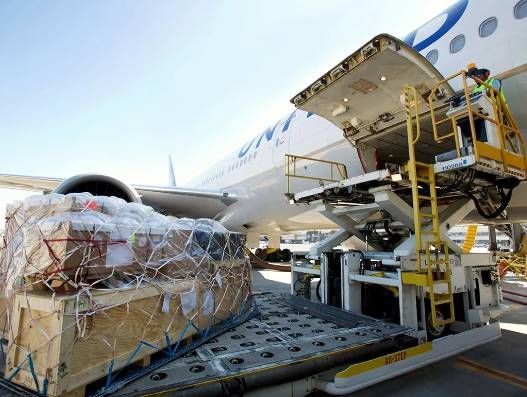
Covid-19 places cargo right at the centre of airlines’ revenue models
With the grounding of two-thirds of all passenger aircraft across the globe and coupled with rising freight rates, cargo has become the only silver line for most carriers

Ever since the beginning of aviation, the cargo was always been an additional benefit for carriers accounting for only 12 percent of the total revenue on average. With the grounding of two-thirds of all passenger aircraft across the globe and coupled with rising freight rates, cargo has become the only silver line for most carriers.
In its financial outlook for the global air transport industry released in June, International Air Transport Association (IATA) expects total revenue of airlines to drop 50 percent to $419 billion in 2020 from 2019’s $838 billion. Compared to 2019, cargo volume will lose 10.3 million tonnes in 2020 to 51 million tonnes. In other words, 2020 will be the worst year in the history of aviation.
However, IATA also notes that the lack of freight capacity due to the absence of belly space of grounded passenger aircraft is expected to push rates up by 30 percent this year. Hence it has estimated that cargo revenues will reach a near-record $110.8 billion in 2020 up from $102.4 billion in 2019, an increase of 8.2 percent compared to 61 percent fall in passenger revenue. Also, cargo will contribute 26 percent to the total revenue of airlines in 2020 up from 12 percent in 2019.
While in 2021 air freight demand is anticipated to be robust as businesses will refill their inventories at the beginning of an economic recovery, a slow return of passenger aircraft will limit the growth of cargo capacity, and will push rates and revenue up further from 2020 levels. IATA estimates cargo revenues will go up to a record $138 billion in 2021, a 25 percent increase from 2020. That is about 23 percent of the total revenue it is expecting, almost double the share it ever had.
IATA’s July forecast showed that global passenger traffic will not return to pre-Covid-19 levels until 2024, a year later than previously projected. So the air cargo capacity is expected to stay tight till then.
Freight rates & revenue
The June World Air Cargo Data (WorldACD) report said “Most airline bosses had great worries in the first half of 2020, but a lack of cargo revenue was not among them. Though worldwide volume year-on-year dropped by more than 18 percent in the first half of 2020, revenue in US dollars increased by almost 21 percent, thanks to the capacity shortage from mid-March. The average rate of transporting one kilogrammeby air rose by 48 percent worldwide: the increase was largest from Asia Pacific (76 percent) and smallest from Latin America (10 percent).”
As per the July 27 TAC Index, transpacific air freight rates from China to the United States on July 27 increased 17.8 percent to $5.16 per kg compared to that on July 6 signalling that it is rising again after coming back to pre-Covid normalcy from $10.21 per kg peak on May 11. However, the real freight rates could be much higher than the recorded figures further helping the airlines to increase their cargo revenue.
Brian Hodges, director cargo revenue management, American Airlines Cargo, said, “It’s no secret that both transpacific and transatlantic shipping lanes are seeing robust demand, which is a good story when you look at our ability to serve both markets, but we also expect to supplement with some growth in the Americas soon and are excited about the potential that exists throughout the region.”
United, American & Delta
Among the three big US carriers, United Airlines reported a 36 percent increase in its cargo revenue in April to June quarter compared to the same period last year due to its focus on operating cargo-only flights. This should be viewed against a 40 percent decline in freight volumes and a 93 percent decline in passenger revenues.
Meanwhile both American Airlines, which went for domestic passenger market in the US, and Delta Air Lines, which concentrated on international passenger operations, reported more than 40 percent decrease in freight revenues.
Andrew Nocella, executive vice president & chief commercial officer, United Airlines, during the earnings call said, “Our approach for the international wide-body long-haul line has been to leverage our cargo capabilities to partially offset declines in passenger revenues. We also operated over 3,800 cargo-only charted flights in the quarter, which contributed to our over 36 percent improvement in cargo revenue in the quarter, while our competitors saw cargo revenue decline.”
“Our cargo revenue in the second quarter and the first month was actually kind of flattish. So you can just imagine what May and June looked like. They were just really off the charts,” he added.
Hodges of American Airlines Cargo said, “While the extra focus on air cargo is welcome and our share of overall revenues has grown, we are still looking forward to an environment where passenger service can return at or near pre-Covid levels. When that will happen is obviously extremely difficult to predict. In the meantime, we expect that cargo will continue to make meaningful economic contributions to the airline and our job is to maximize those contributions by delivering value for our customers.”
“The introduction and growth of cargo-only flying certainly allows us to pivot more often, so we’ll continue to evaluate where those flights make the most sense. Where we see change and opportunity, we’ll be ready to respond,” he continued.
IAG Cargo & Air France KLM
With 340 cargo-only scheduled flights every week and 615 charters, IAG Cargo increased its revenue 33.1 percent and yield 224.7 percent in April to June quarter compared to the same period in 2019 against 51.2 percent drop in volume.
The Air France KLM Group recorded a 46.4 percent year-on-year drop in freight volumes during the quarter while cargo revenues increased by 5.2 percent compared to last year. Meanwhile, the French-Dutch carrier group’s passenger revenue fell 93.2 percent for the same period.
Lynne Embleton, chief executive officer, IAG Cargo, said, “We rapidly developed a network of over 340 scheduled cargo-only flights per week built around our customers’ needs and tailored to the most important cargo flows. We have reconfigured aircraft to maximise cargo capacity, removing seats and using overhead lockers. These were important capacity solutions, albeit ones that brought additional operational complexity and cost.
“In addition to our scheduled cargo-only services, our newly established charter team has worked closely with commercial entities and governments to develop the bespoke capacity solutions. During this second quarter, we operated 615 charters, including 416 critical supply operations for the British, Irish and Spanish authorities. To date, we have helped governments and private customers transport over 11,000 tonnes of PPE and medical supplies on these charters. We also saw additional PPE tonnage transported across our scheduled flights,” he added.
EVA Air & China Airlines
Among the two leading Taiwanese carriers EVA Air reported a cargo revenue increase of 70.69 percent for the first six months of 2020 ended on June 30 compared to last year while freight volume increased only 2.80 percent against a passenger revenue drop of 60.54 percent.
China Airlines’ cargo revenue went up 64.6 percent in the first six months ended on June 2020 compared to the same period last year against the 63.8 percent drop in passenger revenue.
UPS & FedEx
The global delivery services companies UPS and FedX also surprised the industry and created waves in the stock market with their recent quarterly results boosted by the surge in e-commerce volumes. For the quarter ended in June, UPS announced an increase of 13.4 percent in its revenue to $20.5 billion compared to the same quarter last year. Though FedEx reported $17.4 billion in revenue for the quarter ended on May 31, down from $17.8 billion in 2019, analysts were expecting only $16.4 billion.
Carol Tomé, chief executive officer, UPS, said, “Our results were better than we expected, driven in part by the changes in demand that emerged from the pandemic, including a surge in residential volume, Covid-19 related healthcare shipments and strong outbound demand from Asia.”
The FedEx earnings release noted, “Operating results were negatively affected by one fewer operating weekday, increased costs to expand services, higher bad debt expense, increased self-insurance accruals and the loss of business from a large customer. These factors were partially offset by the strong residential delivery volume growth at FedEx Ground, increased revenue per shipment at FedEx Freight, a favourable net impact of fuel and lower variable incentive compensation expenses.”
Be flexible
The data implies that airlines with enough flexibility to switch to cargo operations by leveraging the rising freight rates will survive these testing times. However, only time could tell to what extent these cargo operations could help airlines sustain and how successfully they will balance the supply and demand equations. It seems like the innovations like preighters or cargo-only passenger flights are just the beginning as IATA is only expecting a back to normalcy by 2024.
The June air cargo market analysis of IATA noted that air freight is losing its market share of total world trade in recent months, as buyers are turning to cheaper but slower means of transport like ocean and rail, which again raise concerns for a long term air cargo market.

